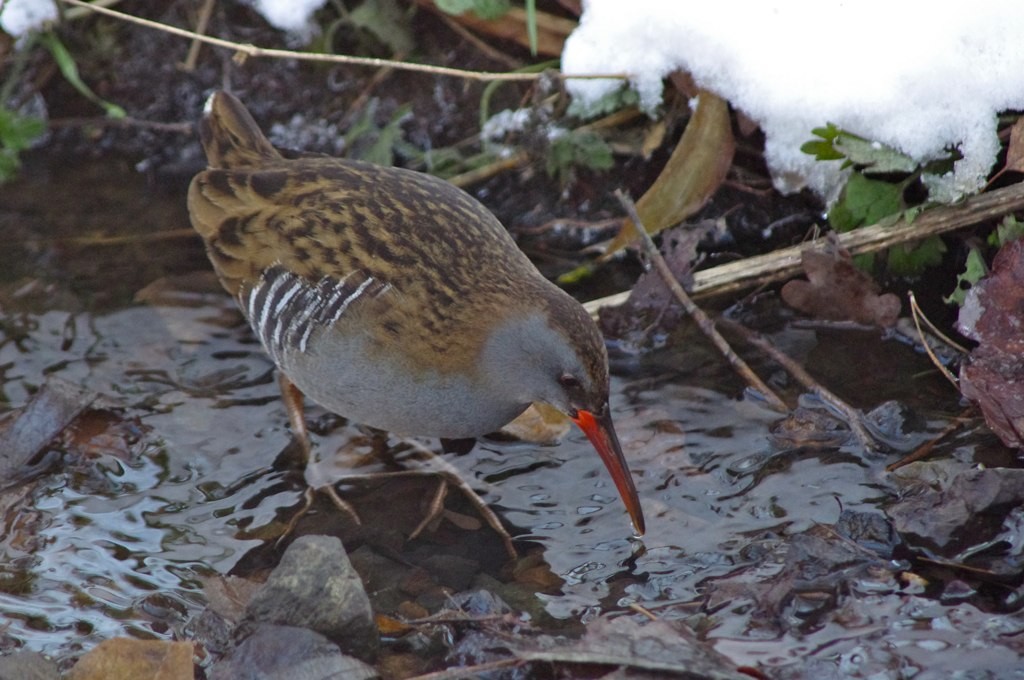 Where can I find water Rail?
Where can I find water Rail?
Where can I find water Rail?
The water rail breeds across temperate Eurasia from Iceland and the British Isles discontinuously to North Africa, Saudi Arabia and western China. Its distribution in Asia is poorly studied. The Icelandic population of water rail, R. a. hibernans, became extinct around 1965, as a result of loss of habitat through the draining of wetlands, and predation by the introduced American mink. Prior to its extinction, at least some birds were present year-round on the island, relying on warm volcanic springs to survive through the coldest months, but this race was also found in winter in the Faroe Islands and Ireland, and on passage through the Western Isles, suggesting that the Icelandic form was a partial migrant. The nominate subspecies, R. a. aquaticus is resident in the milder south and west of its range, but migrates south from areas that are subject to harsh winters. It winters within its breeding range, and also further south in North Africa, the Middle East and the Caspian Sea area. The peak migration period is September to October, with most birds returning to the breeding grounds from March to mid-April. A specimen of the nominate population labelled as "Baluchistan" and collected by Richard Meinertzhagen is considered of doubtful provenance. R. a. korejewi is another partial migrant, with some of the population wintering from Iraq and eastern Saudi Arabia eastwards through Pakistan and northern India to western China. The breeding habitat of the water rail is permanent wetland with still or slow-moving fresh or brackish water and dense, tall vegetation, which may include common reed, reedmace, irises, bur-reed or sedges. In coastal areas, sea rush is common in saltmarsh breeding sites, with sedges and bur-reed dominant in somewhat less saline environments. A study in the Netherlands and Spain showed that the rush provided better concealment than the other maritime plants. As elsewhere, nests were constructed from the nearest available plants. Where it occurs, saw-sedge provides good breeding habitat, its tall (1.5 m (4.9 ft)) dense structure providing good cover for the nesting rails. The preferred habitat is Phragmites reedbed with the plants standing in water, with a depth of 5–30 cm (2.0–11.8 in), muddy areas for feeding and a rich diversity of invertebrate species. Locations with nearby willows or shrubs are favoured above large areas of uniform habitat. In addition to natural fresh or marine marshes, this rail may use gravel or clay excavations and peat workings as long as there is suitable habitat with good cover. It may be found in rice paddies or on floating islands, and it occurs in Kashmir in flooded sugarcane fields. A Finnish study showed that the main factor influencing the distribution of water rails was the extent of vegetation cover, with the highest densities in the most vegetated areas; the presence of other marshes nearby was also significant. However, factors such as temperature, rainfall, length of shore line and extent of peat, important for some other marsh birds, were not statistically relevant. The areas with the highest densities of the rail also had the greatest numbers of three species considered at risk in Finland, the great reed warbler, Eurasian bittern and marsh harrier. The northern limit of breeding seems to be determined by the transition from nutrient-rich wetland to poorer, more acidic water. This leads to the replacement of common reed by a more open vegetation type dominated by marsh cinquefoil, which is unsuitable for the rails. Occasionally, more unusual locations are used. One pair in Scotland nested in the open by the side of a road, and when an English nature reserve installed nest boxes for bearded tits (reed "wigwams" with a wooden floor), rails nested both in the boxes and under the wooden floor, in the latter case sometimes with the tits in residence above. Although mainly a lowland species, the water rail breeds at 1,240 m (4,070 ft) in the Alps and 2,000 m (6,600 ft) in Armenia. An Italian study suggested that reed bed birds need a minimum area of wetland for breeding, which for the water rail is about 1 ha (2.5 acres), although the highest densities are in marshes of 10 ha (25 acres) or more. On migration and in winter, a wider range of wet habitats may be used, including flooded thickets or bracken. Freezing condition may force birds into more open locations such as ditches, rubbish dumps and gardens, or even out onto exposed ice. A Welsh study suggested that individual winter territories overlap, with each bird using a significant proportion of the reed bed. After site desertion in freezing weather, birds return to their former range. A density of 14 birds per hectare (6.6 per acre) was recorded. Birds wintering in Iceland rely on warm geothermal streams, and may access streams through tunnels under the snow. When not feeding, they may shelter in holes and crevices in the solidified lava. This species sometimes wanders well outside its normal range and vagrants have been found in the Azores, Madeira, Mauritania, the Arctic, Greenland, Malaysia and Vietnam.
